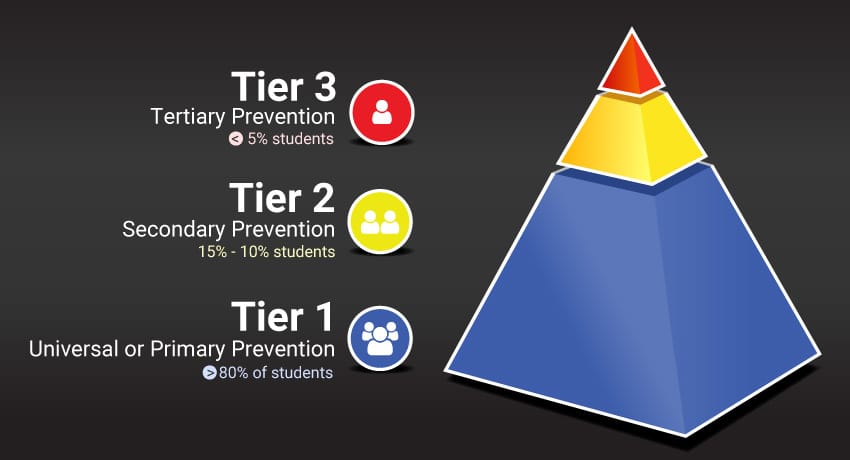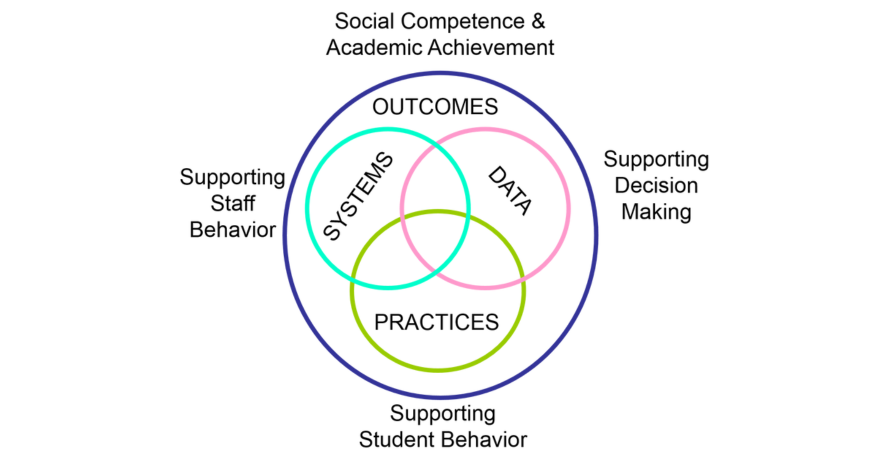In the field of education, fostering a positive and inclusive environment is essential for the well-being and success of students. One approach that has gained widespread recognition for achieving this goal is PBIS, which stands for Positive Behavioral Interventions and Supports. PBIS is a comprehensive framework employed in educational settings to promote positive behavior, create a supportive atmosphere, and address challenging behaviors effectively. In this article, VTJ will explore what PBIS is, how it works, and why it is important in education.
>>>Read more: 4 Reading Levels | How They Are Evaluated?
>>>Read more: Exploring the 7 Roles of a Teacher: A Comprehensive Guide
What Is PBIS (Positive Behavioral Interventions and Supports) in Education?

What Is PBIS (Positive Behavioral Interventions and Supports) in Education?
PBIS (Positive Behavioral Interventions and Supports) in education is a comprehensive and evidence-based framework aimed at promoting positive behavior and improving overall school culture. It is a proactive approach that seeks to create a nurturing and inclusive learning environment for all students. PBIS is not just a set of strategies but rather a philosophy that guides how educators, administrators, and students interact within a school community.
At its core, PBIS is founded on the belief that teaching and reinforcing positive behavior is more effective than reacting solely to negative behaviors. It emphasizes the importance of prevention and early intervention to address behavioral challenges, ultimately leading to improved academic outcomes and enhanced student well-being.
PBIS operates on the principle that a school’s culture and climate play a pivotal role in influencing student behavior. By fostering a positive and supportive environment, PBIS aims to reduce problem behaviors, increase academic engagement, and create a sense of belonging among students.
>>>Read more: What’s The Difference Between Soft Skills Vs Hard Skills – Examples
>>>Read more: 15+ TIPS A First Year Teacher Must Have To Survive
How does PBIS work?
PBIS works through a systematic and data-driven approach that involves several key steps:
- Establishing School-Wide Expectations: The first step in PBIS implementation is to establish clear and positive behavior expectations that apply to all students across various settings within the school. These expectations are typically developed collaboratively with input from staff, students, and families. They are then taught explicitly to all students.
- Teaching and Reinforcing Expected Behaviors: Once the behavior expectations are established, schools implement strategies to teach and reinforce these behaviors. This involves explicitly teaching students what the expectations look like in different settings and providing opportunities for practice and reinforcement. Teachers and staff use consistent language and provide specific feedback to reinforce positive behaviors.
- Collecting and Analyzing Data: Data collection is a crucial component of PBIS. Schools collect data on behavior incidents, attendance, and academic performance to monitor progress and identify areas of concern. This data helps schools make informed decisions about interventions and supports needed for individual students or groups.
- Implementing Tiered Interventions: PBIS uses a tiered approach to provide different levels of support based on students’ needs. Tier 1 interventions are universal strategies implemented for all students. If some students require additional support, Tier 2 interventions are provided, which may include small group interventions or check-in/check-out systems. For students with more intensive needs, Tier 3 interventions are implemented, which involve individualized plans and supports.
- Positive Reinforcement and Recognition: PBIS emphasizes the use of positive reinforcement to acknowledge and reward desired behaviors. Schools implement systems to recognize and reinforce positive behaviors, such as verbal praise, tangible rewards, or privileges. This helps motivate students to continue exhibiting positive behaviors.
- Collaboration and Family Involvement: PBIS recognizes the importance of collaboration among school staff, administrators, families, and community members. Schools involve families in supporting positive behavior and provide resources and strategies for consistency between home and school environments. Collaboration with community partners can also enhance the effectiveness of PBIS implementation.
>>>Read more: How to Foster a Growth Mindset in the Classroom: A Teacher’s Guide
What are the three tiers of PBIS?
Tier 1: Universal, Primary Prevention (All)
Tier 1 of PBIS focuses on creating a positive and inclusive school climate for all students. It involves implementing school-wide strategies and practices that promote positive behavior and prevent challenging behaviors. Tier 1 interventions are designed to meet the needs of the majority of students and are implemented for the entire school population.
>>>Read more: Turn and Talk: Fostering Interactive Learning in the Classroom
Tier 2: Targeted, Secondary Prevention (Some)
Tier 2 of PBIS provides targeted support to students who require additional assistance beyond the universal strategies. It involves identifying students who are at risk of developing challenging behaviors and providing them with more individualized interventions and supports. Tier 2 interventions are typically delivered in small groups or through personalized plans.
>>>Read more: How to Use the Think-Pair-Share Activity to Engage Your Students
Tier 3: Intensive and Individualized, Tertiary Prevention (Few)
Tier 3 of PBIS focuses on providing intensive and individualized support to students with the most significant behavioral challenges. These students require more specialized interventions and supports tailored to their specific needs. Tier 3 interventions are highly individualized and may involve collaboration with external agencies or specialists.
>>>Read more: What Are the Responsibilities of Teacher? (2023 Guide)
Five Elements of PBIS (Positive Behavioral Interventions and Supports)

What Is PBIS (Positive Behavioral Interventions and Supports)? Five Elements of PBIS
PBIS incorporates five essential elements that contribute to its effectiveness in promoting positive behavior and creating a supportive school environment.
Equity
Equity is a foundational element of PBIS. It emphasizes the importance of ensuring that all students, regardless of their background, abilities, or circumstances, have equal access to a positive and inclusive educational experience. PBIS strives to create a level playing field where every student has the opportunity to succeed and thrive.
>>>Read more: How To Use Technology In The Classroom: Benefits & Uses
Systems
The systems element of PBIS involves establishing clear and consistent systems for behavior expectations, teaching, and reinforcement. This includes defining and communicating behavioral expectations to all students and staff, as well as implementing training, coaching for acknowledging and reinforcing positive behaviors. Having well-defined systems promotes consistency throughout the school and ensures that everyone understands their role in creating a positive environment.
>>>Read more: What Is An Assessment Tool? 11 BEST Assessment Tools for Teachers
Data
Data collection and analysis are integral to the success of PBIS. Schools use data to make informed decisions about behavioral interventions and adjustments. This includes tracking behavior trends, identifying areas of concern, and assessing the effectiveness of interventions. Data-driven decision-making allows educators to tailor their strategies to the specific needs of their students and continually improve the PBIS program.
>>>Read more: Importance of Group Work in Teaching: Benefits & Examples
Practices
PBIS encourages the use of evidence-based practices for teaching and reinforcing positive behavior. These practices may include social-emotional learning strategies, classroom management techniques, and proactive approaches to behavior support. The goal is to equip educators with effective tools and strategies to prevent and address challenging behaviors in a constructive and supportive manner.
>>>Read more: Lesson Objectives (Learning Objectives): How to Write in 4 Steps
Outcomes
The ultimate aim of PBIS is to improve student outcomes. This includes both behavioral outcomes, such as a reduction in discipline issues and improved social skills, and academic outcomes, such as increased student engagement and achievement. By focusing on positive behavior and creating a conducive learning environment, PBIS contributes to the overall success and well-being of students.
>>>Read more: How to Deal with Difficult Parents: 10 Best Strategies
Why is PBIS important?
PBIS is vitally important in the field of education because it offers a structured and evidence-based approach to create a safe, inclusive, and nurturing school environment. By emphasizing the proactive teaching and reinforcement of positive behavior, PBIS not only reduces discipline issues but also fosters a culture of respect and support that benefits all students. This framework equips educators with the tools and strategies to address behavioral challenges effectively, ensuring that no student is left behind. PBIS also promotes equity, ensuring that every student, regardless of their background or abilities, has an equal opportunity to succeed. Ultimately, PBIS contributes to improved academic outcomes, enhanced student well-being, and the creation of an educational community where all individuals can thrive and reach their full potential. It plays a pivotal role in shaping the future of education by prioritizing positive behavior and inclusive practices, making it a cornerstone of modern educational approaches.
>>>Read more: Meaningful Feedback for Students: Importance, Tips and Examples
PBIS is a powerful framework that promotes positive behavior, supports students’ social-emotional well-being, and creates a safe and inclusive learning environment. By implementing the three tiers of PBIS and incorporating the five essential elements, schools can effectively address challenging behaviors and foster a positive school climate.
FAQs
Are rewards effective in promoting positive behavior through PBIS?
Positive reinforcement, including rewards, is a key component of PBIS and can motivate students to exhibit desired behaviors. However, it’s essential to use a balanced approach that includes a mix of intrinsic and extrinsic motivators and to ensure that the rewards align with the desired behaviors and goals.
Why is communication key for PBIS in schools?
Communication is key for PBIS in schools because it fosters a collaborative and consistent approach to behavior management. Effective communication ensures that all stakeholders, including teachers, administrators, students, and parents, are on the same page regarding expectations, strategies, and progress. It allows for the sharing of information, feedback, and resources, which helps maintain a unified and supportive school climate.
What is schoolwide PBIS?
Schoolwide PBIS is a proactive and evidence-based framework that promotes positive behavior and prevents problem behaviors in schools. It involves the implementation of a comprehensive system that addresses behavior at the universal, targeted, and individual levels.
🌟 Are you facing difficulties in finding and securing teaching positions in Vietnam? Are visa procedures causing you trouble? Feeling overwhelmed and directionless upon your arrival in Vietnam for teaching assignments? Don’t worry, VTJ’s English Teaching Placement in Vietnam (EPIV) Program 2024 provides comprehensive support to solve ALL the matters.
👉👉👉 Click HERE to request free consultation.




